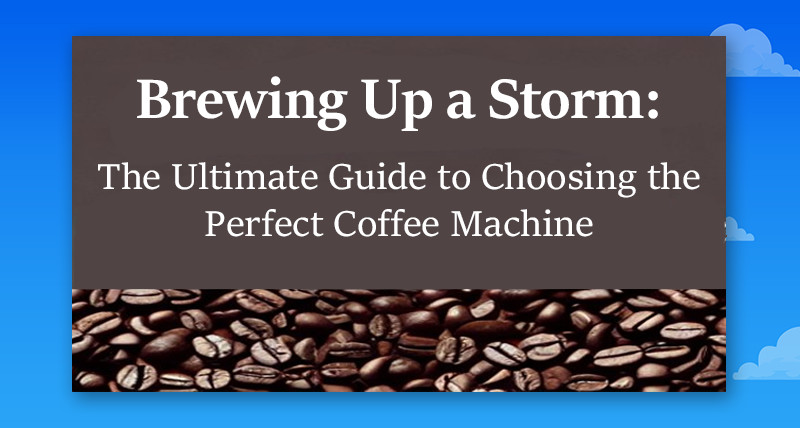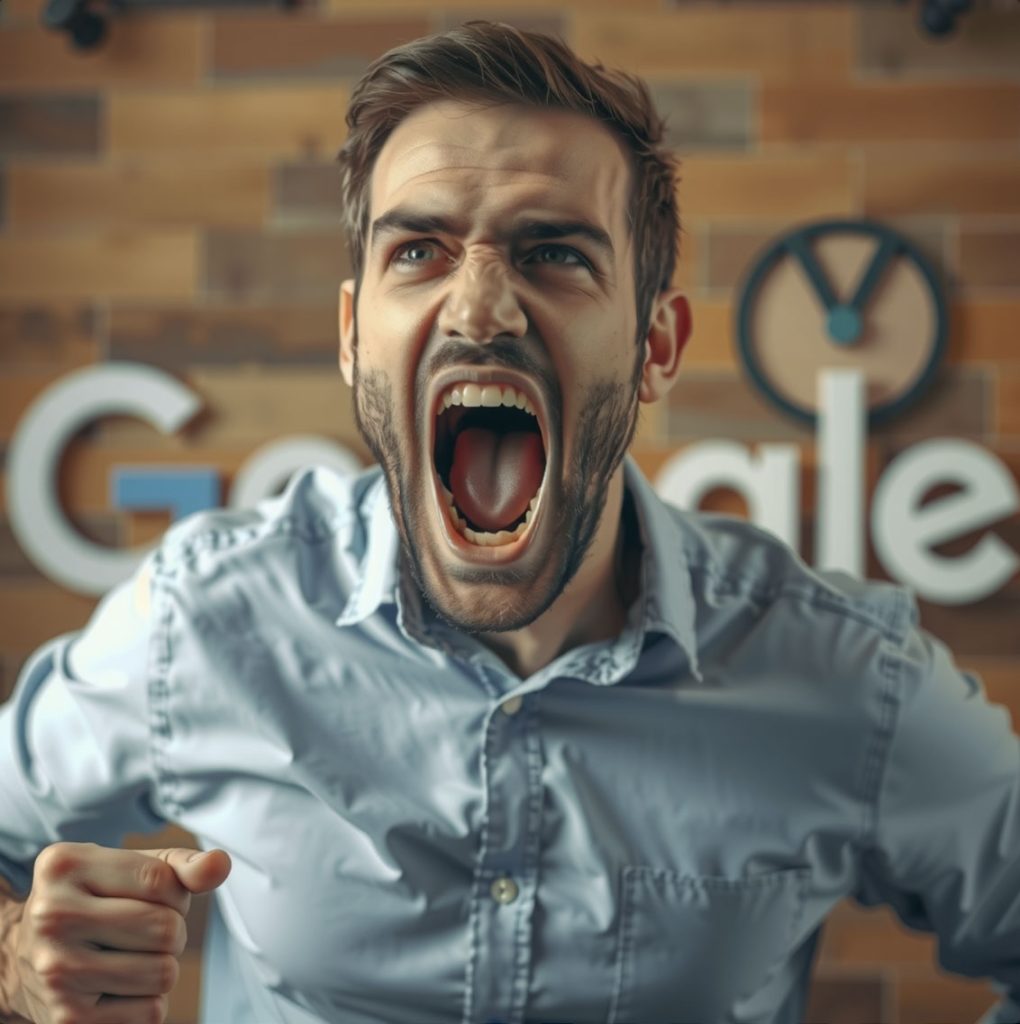How to Optimize Your Headlines for Maximum SEO Impact
SEO isn’t always an easy task. It requires an understanding of search engine algorithms, keyword research and competition ranking. But, when done correctly, applied to the content and headlines you choose, SEO can result in increased visibility on search engine results pages, and relevance to customers.
If you’ve been spinning your wheels with SEO and need a little boost in the right direction, this post will help you understand how to optimize your headlines for maximum SEO impact. Read on to learn how to craft SEO-friendly headlines, maximize organic visibility, and ensure your blog content is found by your target audience.
Quick Recap
Optimizing your SEO headlines is important for improving visibility in search engine results pages. To do this, you should include keywords and make sure the headline is short and attention-grabbing while accurately reflecting the content of the page.
What is SEO Headline Optimization?
SEO headline optimization is the practice of crafting headlines for maximum search engine visibility. This process often includes using a keyword to target specific searches, keeping the headline within a certain length, utilizing an eye-catching structure or phrasing style and incorporating an emotional angle. Doing so can increase click-through rates on search engine results pages (SERPs) and encourage people to read further into the content.
When deciding whether to go with SEO headline optimization, it’s important to consider both sides of the argument. On one hand, SEO title tags are essential for ranking well in SERPs — and being featured prominently in organic search gives content more potential to be shared and viewed. Additionally, utilizing a keyword can ensure your content is found more easily by those seeking it out.
On the other hand, there’s a fine line between creating an effective SEO headline that encourages viewership and making one that appears spammy or disingenuous. If done incorrectly, keyword stuffing can move readers away from rather than towards your content — resulting in low click-throughs and engagement metrics. Therefore it is important to understand how to write an effective SEO headline without over optimizing it or compromising its message or creative element.

With that in mind, why is SEO headline optimization necessary? The next section will explore this further.
Why is SEO Headline Optimization Necessary?
SEO headline optimization is necessary for most websites and businesses today because it can get more people to click on your content and rank higher in search engine results pages (SERPs). Headline optimization makes the difference between a media property thriving or failing to reach its goals.
One of the reasons why SEO headline optimization is so important is that it helps search engines understand the context of the article or post you are creating. By using basic SEO principles and techniques, such as optimizing titles, meta descriptions, and keywords, you can ensure that search engines will be able to understand what the content is about so they can rank it more accurately.
At the same time, SEO headlines also influence people’s decision-making process when it comes to clicking on a link versus ignoring it. Optimized headlines help grab readers’ attention, making them more likely to follow through with their intention of clicking through to learn more information.
Additionally, optimized headlines have been found to increase overall website traffic by up to 30%. So not only are you helping search engines crawl your content better, you’re getting more eyes on your content and boosting engagement rates at the same time.
Even though SEO headline optimization may seem like an tedious task, it’s worthwhile when considered in terms of long-term benefits. It’s important to create targeted and relevant headlines with meaningful keywords that draw readers’ attention and communicate quickly what the post is about. Doing this can make a huge difference for any company when done correctly and consistently applied across all content properties.

In conclusion, effective SEO headline optimization is necessary for anyone looking to improve their visibility in search engine rankings and increase website traffic. In the next section we’ll discuss how optimized headlines lead to increases in search engine rankings.
Increases Search Engine Rankings
When it comes to optimizing headlines for maximum SEO impact, one of the most important aspects is increasing search engine rankings. This is done by utilizing a combination of keyword research and analytics in order to develop titles that are targeted and capture the attention of readers. By using relevant words, phrases, and topics in titles, search engines can better understand what a page is about. This increases the likelihood that the page will appear in searches related to the topics mentioned in the headline.
Another way to increase search engine rankings is through strategic link building from other trusted websites. When websites link back to yours, it signals to search engines that your site is high-quality and authoritative. This helps boost your ranking in search results and also can lead to increased web traffic when users click on those links.
It is worth noting that while optimizing headlines for higher search engine rankings is important, content must still be valuable and engaging enough to draw readers in and keep them interested. Just because a headline may rank well in search engine results doesn’t necessarily mean it will generate meaningful engagement with visitors or potential customers. To maximize SEO impact, it should be balanced with attention-grabbing titles that compel readers to take action.
Robust strategies for optimizing headlines while keeping reader engagement top of mind are essential for achieving maximum SEO impact. The next section will focus on techniques that ensure both increased search engine rankings as well as higher reader engagement.
Increases Reader Engagement
Increasing reader engagement is a critical part of optimizing headlines for maximum SEO impact. Attracting readers and inspiring them to take action can be the difference between success and failure when it comes to boosting your rankings. Depending on the particular circumstances, there are a few different strategies you can use to boost engagement.
On one hand, you can rely on creative, compelling content that resonates with readers and encourages them to dig deeper into your website. This will help establish trust and give visitors a reason to read more, subscribe, or even buy something from you. On the other hand, research shows that using buzzwords or phrases related to popular topics can also increase engagement by signaling relevance.
Ultimately the best approach involves finding a balance—utilizing both techniques to create an engaging headline that increases both relevancy and interest in the content. With this in mind, let’s move onto some tips for writing effective SEO headlines.
- A study conducted in 2019 found that headlines with 6 – 13 words had an average click-through rate of 21.9%.
- Optimizing headlines with keywords has been shown to improve organic search engine rankings and web traffic.
- Keywords used in page titles and headlines can have a significant impact on a page’s ranking in search engine results pages (SERPs).
Tips for Writing Effective SEO Headlines
When it comes to optimizing headlines for maximum SEO impact, there are certain tips and strategies that can be employed to ensure success. Here are some of the most important considerations for crafting effective SEO headlines:
Be explicit: It’s essential to be as explicit as possible when writing your headline. This means opting for clarity and specificity rather than being obscure or vague. Aim for a straightforward headline that gives readers a sense for what the content is about. Use action verbs and include keywords where appropriate.
Keep it short: While being clear and descriptive is important, it’s equally vital to keep your headlines within a reasonable length. Studies suggest that 8-9 words is optimal when it comes to headlines, as longer titles tend to lose readers’ attention. Keep things concise while still conveying the main message effectively.
Be creative: Even though SEO is a science at its core, that doesn’t mean there isn’t room for creativity when it comes to crafting headlines. Think outside the box and come up with memorable phrases that draw the reader in while still fitting within search engine best practices.
Strive for coherence: It’s not always about using the right words or phrases. When it comes to SEO-optimized headlines, context matters just as much as individual words do. Your headline needs to be coherent and convey a unified message without any awkward phrasing or confusion for the reader.
By using these tips and exploring various strategies, you can create headlines that are both effective from an SEO perspective, as well as attention-grabbing and informative to readers. Now, let’s dive into research keywords — an essential part of optimizing your headline for search engines — to find out how they can help further improve your optimization efforts.
Research Keywords
When striving to create headlines that will have a maximum SEO impact, research into keywords is key. Keyword research is the process of identifying and using the words and phrases that potential readers of your article are searching for so they can find you. To do this, it is important to identify which keywords are relevant to your content that people are likely to be searching for.

When researching keywords, choose ones with a higher search volume as this may indicate that its relevant to what people are looking for and thus will attract more readers who are looking for the same. However, short-tail or low-traffic keywords may provide less competition than high-traffic ones or long tail ones, making them easier to rank high in search engine results pages (SERPs). Ultimately, it is up to you as the writer to decide what kind of keyword strategy is most suitable for your article.
It is important not to choose too many target keywords as this can make it difficult for any one of them to rank high because there is only so much space in the SERP window for them. Too many competitive keywords are also likely to confuse Google’s algorithms and any readers who come across your article. Therefore, when researching keywords, pick those that you think best encapsulate the content topic of your article; this does not mean you should use every keyword available but rather just enough supporting words to ensure maximum SEO impact and appeal.
Now that you have taken the time to research appropriate keywords, it’s time to create catchy titles that will draw potential readers in.
Create Catchy Titles
Creating catchy titles that grab your audience’s attention is one of the most important components for optimizing headlines for maximum SEO impact. A great headline is not only irresistible to readers, but it should also be semantically relevant to search engine algorithms.
Optimizing titles for maximum SEO impact requires several important tasks. Firstly, create titles that are simple and clear so that they resonate with the reader from their very first impression. This can result in increased page clicks, as readers are more likely to click a link if its title clearly displays what it’s about. Additionally, crafting catchy headlines with effective keywords will help your content appear higher in search results. Finally, headlines should be creative and engaging enough to evoke curiosity and compel readers to click.

Of course, creating catchy titles is easier said than done. There has been considerable debate over the years over how best to craft titles for SEO purposes: should you use long-tail keywords or short ones? Should you use industry-specific language or keep it general? While there’s no single answer as every situation requires a different solution depending on the specific context and audience, it’s important to consider both sides of this debate as you craft your title.
No matter which method you choose, making sure your titles are catchy and effective is an essential part of optimizing headlines for maximum SEO impact. In the next section, we’ll explore the importance of testing headline effectiveness in order to ensure maximum visibility among search engine algorithms.
Testing Your Headline Effectiveness
Being aware of all the correct SEO practices is important but it’s also essential to know how effective your headline is. There are a few ways to check if a headline is accomplishing its goal. Search engine crawlers and page ranking algorithms usually don’t consider the actual headlines, but there are some tools which do. Monitoring tools such as Google Analytics can determine whether the page content text is being read and how long people are staying on that page before moving to another website. This data can inform users when they need to make improvements or adjustments while testing different headline options.
Another way to test the effectiveness of headings is A/B testing, in which two variations of the same text and headline are created with slightly different formulation, phrasing, and structure. This makes it possible to pinpoint what works best for a given situation by comparing results of the two versions. Generally speaking, the new version should have higher click-through rates than the original one.
The argument exists that if you already have a decent website traffic, it isn’t necessary to be obsessed with optimizing headlines. Doing A/B tests may disrupt user experience, so it’s important not to start experimenting for no purpose or unnecessarily tweak them just for optimization purposes. It’s advisable to spend additional time studying how website visitors interact with headlines before running any tests.
Finally, it’s important not to forget basic principles such as writing compelling and accessible headlines when making any tweaks or adjustments during optimization processes like A/B testing. While SEO can bring more traffic, it won’t do much good if visitors leave after seeing a weak headline without reading full content because they were not intrigued enough by the story that was told in the headline itself. Remember that your content should be optimized too.
With all of this information in mind, we can turn now to concluding how best to optimize headlines for maximum SEO impact.
Conclusion
When it comes to crafting effective headlines that garner maximum SEO impact, it is important to make sure that the titles of articles and webpages are engaging, keyword-rich, and succinct. In order to create a successful headline for SEO purposes, marketers must have an understanding of their target audience and utilize keywords that maximize visibility both within search engine algorithms and to the readers themselves.
When it comes to optimizing headlines, there is no one-size-fits-all solution. Some companies may benefit from short headlines with easily recognizable keywords while others may need lengthier titles that present additional details to potential customers. Going overboard on keywords can also backfire by making an article appear spammy or be seen as “keyword stuffing” by search engines and can actually reduce overall relevance.
The debate regarding optimizing headlines for SEO largely revolves around balance. Successful optimization requires finding a balance between keyword inclusion and content quality. Longer headlines are better at educating potential customers about the topic but shorter titles are often more eye-catching in search engine results. Companies must find a good middle ground for their particular audience and industry using resources like keyword research tools and A/B testing methods in order to obtain the most effective results from organic searches.
In conclusion, successful headline optimization requires strategic planning and research in order to ensure maximum SEO impact without sacrificing the quality of content provided by organizations. The debate between long and short headlines for their respective benefits illustrates the importance of taking time to experiment with different types of titles in order to identify what works best for any given company or campaign.
Common Questions Answered
How often should I update my SEO headlines?
Updating your SEO headlines should be done as often as necessary. Depending on the niche you’re operating in, this could mean monthly, quarterly or multiple times a year. Your headlines should reflect changes in technology, trends and search engine optimization techniques so that they remain current and effective. Additionally, keywords and phrases used in your headlines should be updated to match shifts in popular search terms, which can help boost your rankings in search engine results. Managing these updates is an important part of maintaining an effective SEO strategy over time.
How can I make my SEO headlines stand out?
Making your SEO headlines stand out is all about striking a balance between keyword optimization and creative content. It’s important to use keywords in a way that works with the message you intend to convey. Try to use relevant words that concisely communicate the benefit of reading the content, while remaining distinct enough to draw attention. Additionally, using tools such as headline analyzers or testing multiple headlines could help refine the effectiveness of your titles. Finally, incorporating related images and even emojis into the mix can add interesting visual cues and make your headlines stand out from the crowd.
What strategies should I use to optimize SEO headlines?
The most effective strategies for optimizing SEO headlines are as follows:
1. Keep It Short and Sweet: Aim for a headline that is no longer than 60 characters, including spaces. This ensures it will fit within most search engine titles, which reduces the risk of being cut off.
2. Include Targeted Keywords: Use targeted keywords in the headline to make sure it is easily picked up by search engines and ranked higher. This will also help prospective readers find your content quickly and easily.
3. Make It Enticing: Create headlines that are attention grabbing and compelling at first glance to ensure more people click-through to read the article.
4. Use Power Words: Utilize persuasive language and strong actions words to further encourage readers to engage with your content.
5. Consider Your Audience: Think about what your audience wants to read and how they would search for it in a search engine when creating headlines. This will help you create more relevant optimization opportunities that can ultimately improve your visibility in the SERPs (Search Engine Results Pages).








